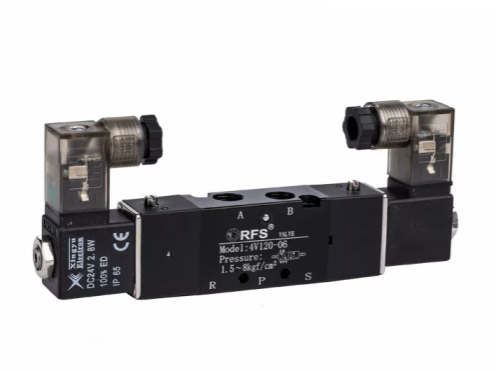How Many Types of Directional Control Valves Are There?
Importance of Directional Control Valves
Directional control valves are integral components in hydraulic and pneumatic systems, often known as bang-bang or discrete valves. These valves play a critical role in directing fluid flow within a system, enabling various actions such as starting, stopping, accelerating, decelerating, and changing the motion direction of actuators. In addition to these functions, directional control valves provide several key benefits, including:
Isolation of specific branches within a circuit
Bypassing valves or return-line filtration
Preventing flow in one direction
Safeguarding hydraulic components from pressure surges
Most directional control valves utilize a spool-type design, wherein a spool regulates fluid flow by connecting various internal passages and ports. This spool consists of lands and undercuts, which are housed in precision-machined housing. As the spool shifts, it opens and closes flow pathways by manipulating these lands and undercuts. Spool-type valves are particularly popular due to their ability to shift into two, three, or even more positions, thus routing fluid through different combinations of inlet and outlet ports. The ports, referred to as "ways," indicate how many lines enter and exit the valve. A common example is the 4-way, 3-position valves.
The actuator is the component responsible for changing the position of the spool in a directional control valve (DCV). There are four primary methods for actuation:
1. Manual Operation: The spool is operated manually, using a handle, button, or foot pedal.
2. Mechanical Operation: This involves the spool being shifted through mechanical linkages such as cams and rollers.
3. Solenoid Operation: When an electric coil or solenoid is energized, a magnetic force is generated that pulls the armature into the coil, subsequently moving the spool of the valve. It’s essential to recognize that solenoids alone may not generate enough force to move a DCV spool when fluid flow exceeds 25 gpm without sufficient electrical power. Nonetheless, solenoids are commonly employed.
4. Pilot Operation: This method utilizes fluid pressure within the hydraulic system to move the spool to its designated position. A pilot signal (for hydraulic or pneumatic systems) is applied against a piston at either end of the valve spool, creating pilot pressure that shifts the spool.
Another critical factor to consider is the center position of the valve. There are four types: open, closed, tandem, and float. Open-center position DCVs are typically suited for applications with only one cylinder in the hydraulic system.
Conversely, a closed-center position directional control valve (DCV) allows multiple actuators in a hydraulic system to operate independently. A tandem-center position DCV maintains a piston’s position within the cylinder while permitting fluid flow back to the reservoir without needing to activate a relief valve. Generally, industrial directional control valves are available in two, three, or four positions, and some models even offer five or six positions.



